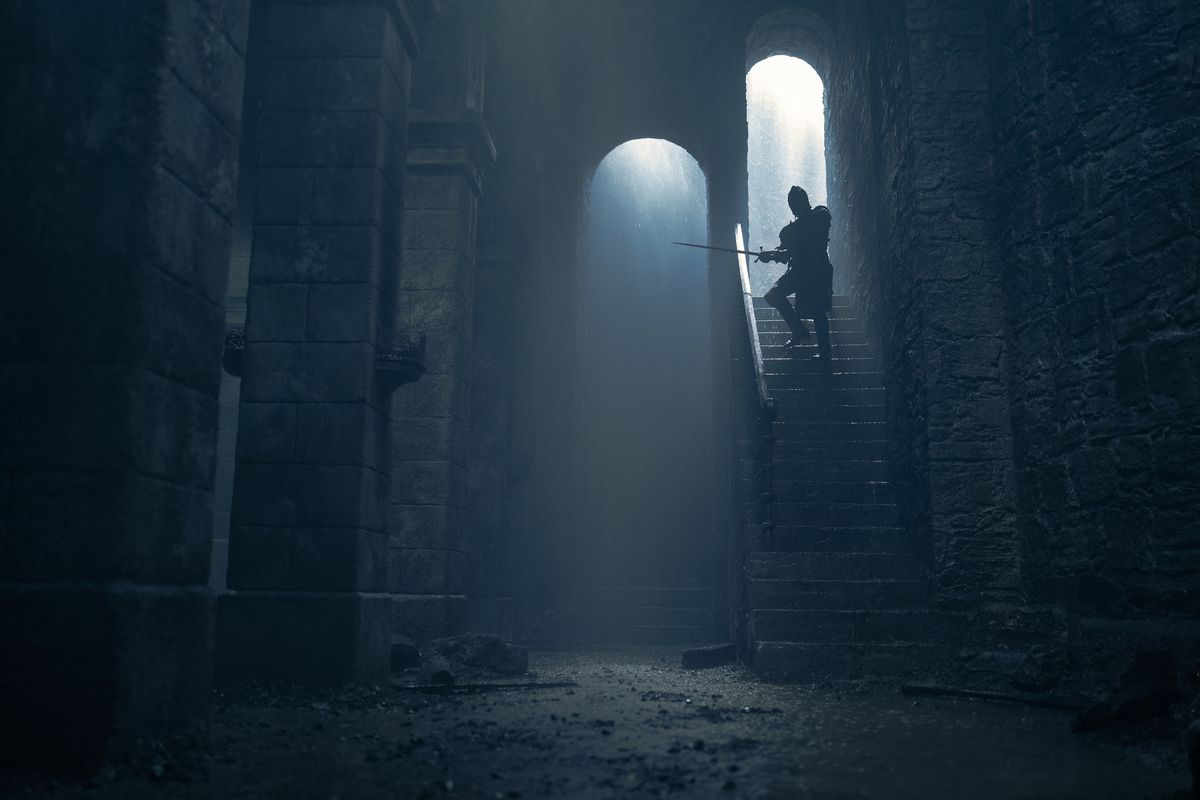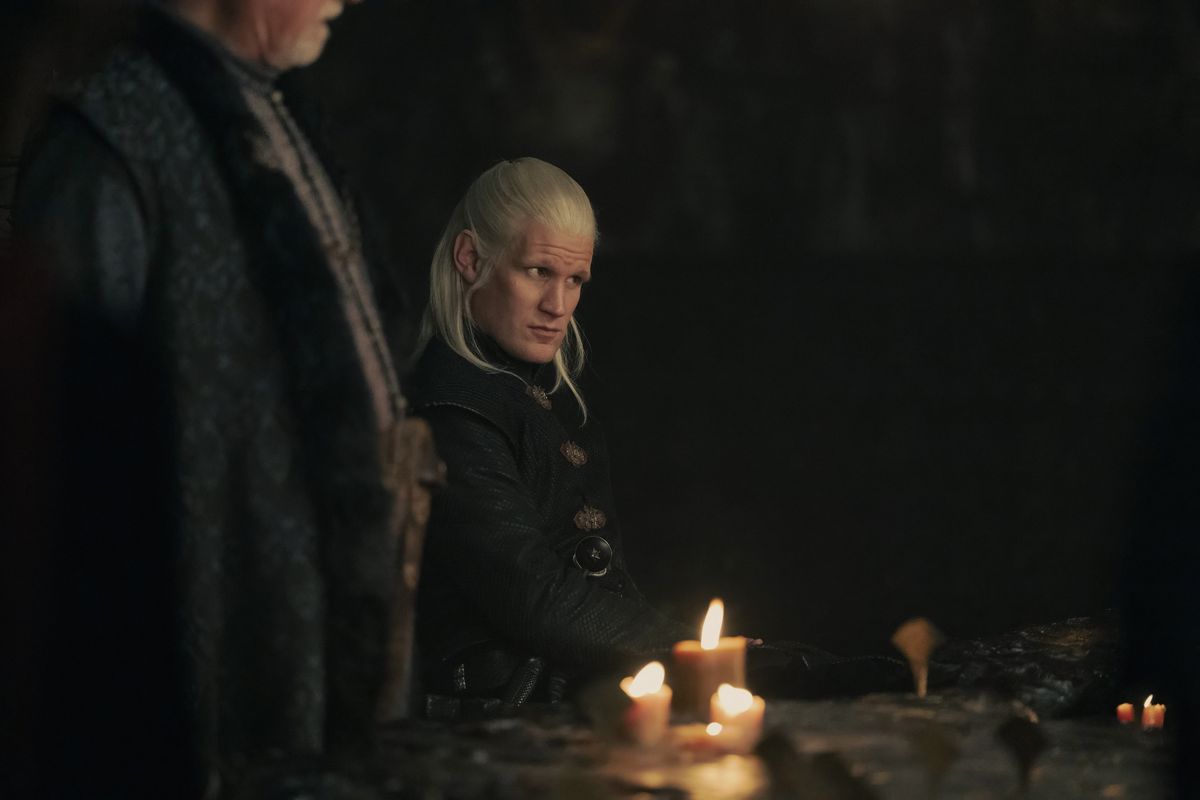House of the Dragon finally gives a tour of Harrenhal, the most haunted castle in Westeros
(Editorial note: This story contains spoilers for House of the Dragon season 2 episodes 3 and 4.)
House of the Dragon is no stranger to the supernatural. HBO’s fantasy drama series not only offers plenty of low-key magic — not to mention, you know, dragons — but it is also the prequel of Game of Thronesa show filled with snow zombies and smoke monster babies. It’s clear that this is a universe where otherworldly forces are at play. Still, Daemon Targaryen’s (Matt Smith) unsettling stopover at Harrenhal in season 2 may mark the House of the Dragon‘s most overtly supernatural subplot yet.
Everyone’s favorite sassy sadboy prince takes up residence in the supposedly cursed castle in episode 3, and strange events soon begin to pile up. It certainly seems like he’s caught up in Westeros’ answer Ghost huntersbut does he (and everyone else) just jump on shadows? How cursed is House of the DragonHarrenhal, really?
Why does everyone think Harrenhal is cursed?
Image: HBO
One of the few things that Westeros’ highborn and lowborn seem to agree on is that Harrenhal has been cursed ever since its foundations were laid. Why? George R. R. Martin’s A Song of Ice and Fire books, House of the DragonAnd Game of Thrones attribute Harrenhal’s dubious reputation to two main factors.
The first is the Olympian arrogance of Harrenhal’s founder, King Harren Hoare, in the run-up to the castle’s opening ceremony. Harren made a big point about how invincible his generations-in-the-making fortress would be — and on paper, his boast made sense. Harrenhal is almost comically large and its battlements (said to be made of mortar mixed with Harren’s blood) could theoretically repel any conventional attack.
The bad news for old Harren was that dragons are a very unconventional species. King Aegon I Targaryen and his sisters invaded Westeros on the day Harren moved to Harrenhal and promptly set the place on fire. The Targaryen dragons barbecued Harren and his sons during the attack, and Harrenhal itself was never the same again. Not surprisingly, rumors soon began circulating that Harrenhal was cursed, possessed, or both.
The second factor that contributes to Harrenhal’s dark reputation is that almost everyone who succeeded Harren as lord of the castle fared no better. We saw some of this misfortune in Game of Thrones‘ eight-season series: Tywin Lannister, Janos Slynt, and Petyr “Littlefinger” Baelish are shot dead in the toilet, banished, then beheaded, and respectively thrown to the floor with a Pez dispenser. House of the Dragon In Season 1, Lyonel Strong and his son Harwin are also added to the supposed victims of the Harrenhal Curse.
Honestly, it’s hard to blame people for thinking the place is haunted!
What happens at Harrenhal in the Game of Thrones books?

Photo: Ollie Upton/HBO
Both the core A Song of Ice and Fire novels and House of the Dragon‘s source text, Fire & Bloodstop before they show any paranormal activity in Harrenhal. Sure, we hear legends about the various horrors of the fortress, like the flaming phantoms of Harren and his children, a child-eating ghoul named Mad Lady Lothston, rafters full of raven ghosts, and household staff that turn to ash in their sleep. We never really get to see all that kind of stuff.
At one point, Littlefinger complains about Harrenhal’s ghostly guests; however, this is likely just the ex-Master of Coin’s trademark sarcasm. Likewise, while several characters (including Jaime Lannister and Arya Stark) acknowledge that apparitions of Harren and his sons reportedly roam the castle’s halls, no one witnesses the phenomenon firsthand. Furthermore, Westerosi rumors have it that Harren’s ghost has murdered a pair of Lannister-allied villains in A clash of kings are flat-out wrong; Arya’s mentor, Jaqen H’ghar, is actually responsible. There’s a similarly prosaic explanation for the eerie shrieks emanating from Harrenhal’s aptly named Wailing Tower: it’s simply wind blowing through cracks in the walls.
However, Fire & Blood also describes other, less easily hand-waved supernatural deceptions on the grounds of Harrenhal. It is striking that the castle’s Heart Tree not only has a terrifying face, but also ‘bleeds’ every spring through dragon claw marks in its trunk. Admittedly, Heart Trees are a very separate branch (pun fully intended) of magic in A Song of Ice and Fire lore, and don’t necessarily fall under the curse umbrella. Still, this certainly fits the definition of “creepy” – and arguably confirms that something more sinister is going on at Harrenhal.
Is Harrenhal really cursed? Or is that just Westerosi superstition?

Photo: Theo Whitman/HBO
Honestly? No one knows for sure. Ambiguity is a key component of Martin’s take on magic, the supernatural, and religion in A Song of Ice and Fire. As such, the details surrounding all three—including curses, real or imagined—are deliberately vague. Harrenhal could be Be pursued by an evil force that seeks to destroy Daemon, but don’t hold your breath waiting House of the Dragon Showrunner Ryan Condal can say for sure.
Certainly, nothing in Episodes 3 or 4 categorically confirms or rules out Harrenhal’s curse. Yes, Daemon sees his bedroom door being shaken by unseen forces; Harrenhal is drafty as fuck though. Our man’s (admittedly messed up) visions of the younger Rhaenyra aren’t exactly a reason to call an exorcist, either. First of all, Rhaenyra is still alive (so this is not a ghost), and secondly, Season 2 is full of hints that Daemon is losing his grip. It’s the classic “Is this all in his head?” trope.
But while the curse of Harrenhal is still in dispute, House of the Dragon season 2, one thing is clear: haunted or not, the castle is Westeros’ least attractive vacation destination.
